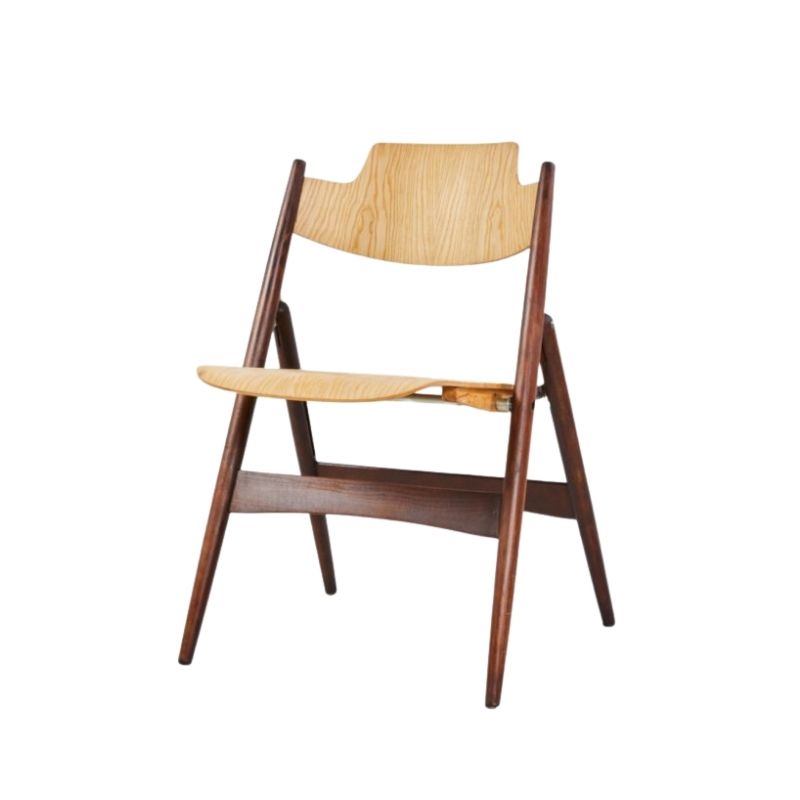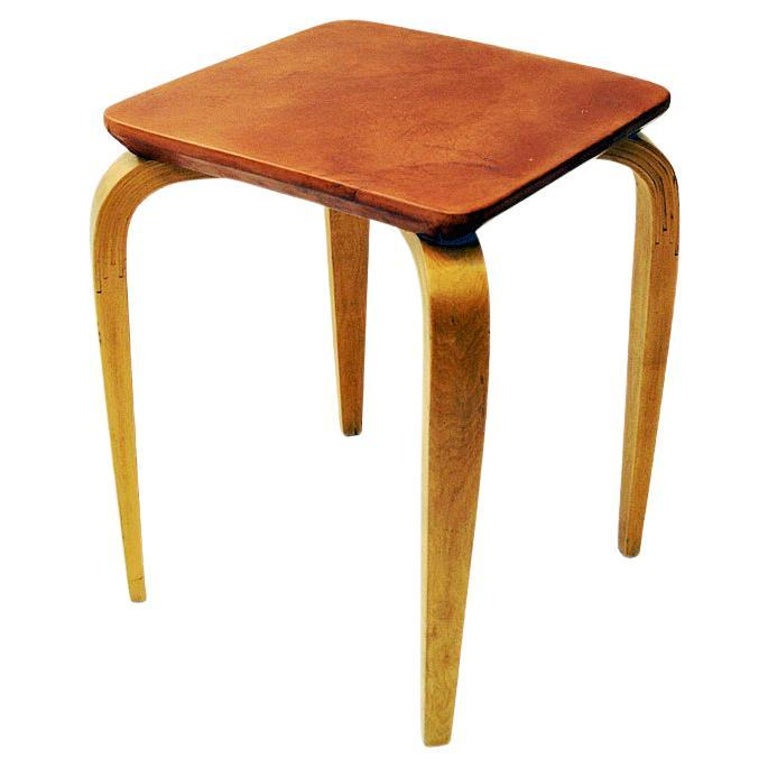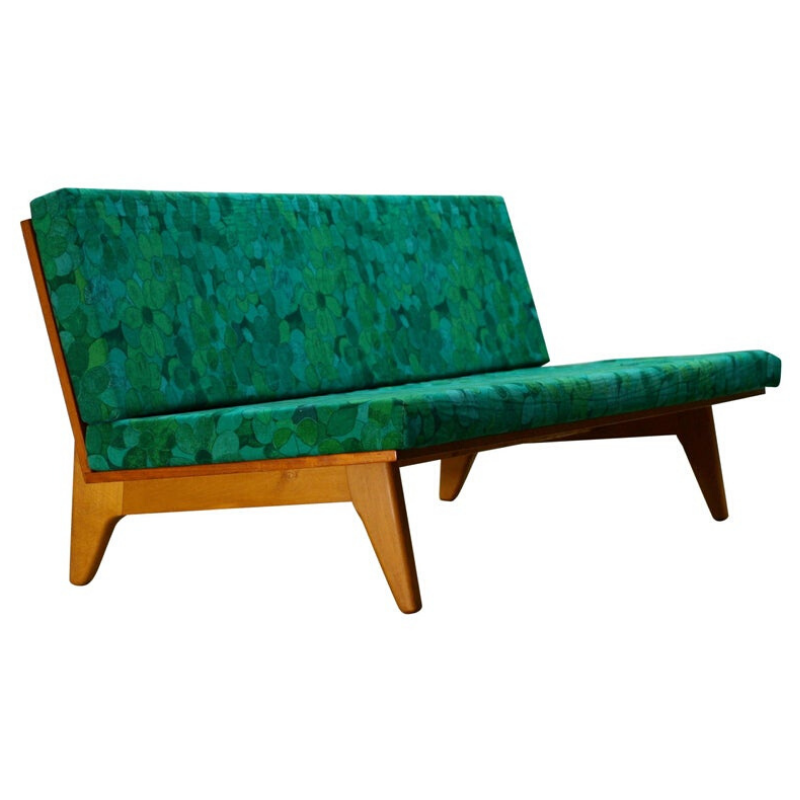For every one slotted head screw I have stripped the slot on...
I have stripped 50-100 Phillips heads over the years. Put another way, I have almost never stripped a slotted head so that I could not drive the screw, whereas I have stripped Phillips heads on practically every project I have ever worked on. The virtue of the Phillips head is that with a magnetized electric driver, you can stick the screw on the driver and use both hands to control the driver. Alas, this virtue means very little when half way in one hits a knot or some other friction and one strips the head. Frankly, I've never worked on a carpentry project where I didn't hear someone cursing at stripping a Phillips. The reason they strip so frequently is that one invariably does not have just the right size of Phillips driver to seat perfectly in the Phillips head. But I don't even want to be that gracious to the Phillips head screw and driver. I have stripped them when they fit together just right.
If one has to have a driver and a screw that can be held on the driver prior to driving, I really like those weird little screw heads and drivers that you use on refrigerator doors. I've NEVER stripped one of those before. But I never see those kinds of heads for wood carpentry screws...just Phillips and slotted head.
Oh, I forgot, I also like a hex head screw that I can drive with a socket.
I am someone who should not u...
I am someone who should not use tools, so the slotted head has always been a challenge. What the slot lacked was an exterior edge at each side to prevent the screwdriver (or more accurately the screw's driver!) from sliding it into the project, gouging it, and ruining it forever. If such a screw was available, it may actually have been preferable to the phillips (this concept is essentially the Robinson or square screw). In larger formats, where the size of the fastening head is not a factor and extreme torque is required, I would guess that designs get far more creative than that even, as far greater attention need be paid to the unscrewing part of the equation. This deck project has been no fun. The removal of old boards fastened to joists with phillips head screws has driven home to me the fact that the ability to unscrew well, no pun intended, is equally if not more important than the opposite.
One last word on the screw af...
One last word on the screw after doing some quick research. I was surprised to find that the Robertson head was actually developed prior to the phillips, in 1908 in Canada. It is slightly different than the square head screw (American clone), in that the square hole is tapered and thus not as susceptible to being stripped. Why the Robertson did not gain popular use prior to the phillips, I don't know. Finally, for fasteners that have been stipped upon attempts to unscrew, there is a driver called a screwout (I found one at Sears), which worked happily on about 1/2 of the hundreds of screws in my deck. For the others, I used an old chisel to remove wood to the point where I could grasp the head and unscrew it with a vise-grip (patented 1924).
Screw that
I have stripped many screws, but the majority of them were soft crappy brass screws. I have also twisted the heads off of soft brass flat head screws.
I tend to agree - flat head screw drivers very often slip off and gouge into projects. I'd rather have to unwind a phillips head with a pair of pliers than risk a gouge.
I will say that the non-variable speed drill is a horrible tool.
Also - almost ALL chained pens - at the bank, the grocery store, the signature pads of credit card machines - almost ALL of them place the chain anchor on the right side - meaning us lefties have to write over the chain.
.
A discussion of fasteners is useful and rare. I would be interested in studying their history, something I should have done long ago.
Even the best-designed tool can be misused; one cannot blame on the tools the use of the wrong size or shape driver (hand or powered). There are three sizes of Phillips, and at least two of Robertson (square drive), for instance. And, brass screws are used only when weathering or appearance demand them-- fortunately, because the correct-fitting screwdriver is even more necessary with softer metals (as has been stated). The straight-bladed driver must be carefully chosen to fit the slot as snugly as possible, and of the greatest length that the slot will allow. But you knew that. . .
There is a European (?) version of Philips called Posidrive (in the US, at least). Both varieties, as well as hex drive, are indeed much more prone to "camming out" than the square drive. Would Torx (the star-shaped multi-spline recess drive) have been adopted as a widely-used pattern, if it had been developed earlier ? Was Robertson a Canadian invention ?
The use of the electric drill (or corded drill) as a screw gun is an odd perversion of the often-seen combo of corded drill for hole-making and cordless screw-gun as a fastener driver. When I see this sensible order ignored (much less reversed) I wonder if tools feel and behave that much differently in other hands than in mine. . .
Anyway, beautiful thread. SDR
The Robertson head was...
The Robertson head was patented in Canada in 1908. The Phillips I believe in the US in the 1930's. The Robertson was used in the production of early Ford motor cars. The square head is the American clone of the Robertson, the primary difference being that the box in the Robertson head has a taper. The more unusual screw heads such as the torq-set and the tri-wing were used by Nintendo and McIntosh computers in early production to discourage individuals from attempting home repair.
I'm glad to be here SDR,
tha...
I'm glad to be here SDR,
thanks much, it's a very nice room and I've always enjoyed a free bar, yet I fear that all my talk about tools may be wearing thin in these fine conversations of design. Have I said yet that basketball has been ruined by the advent of the 3 point line.
Ah, the trey, now you've got me started...
IMHO, basketball was a nearly perfectly designed game before the trey.
It had lots of symmetries, an abstract form language and jut enough imperfections to keep it human. Its basic unit of scoring was the 2 pt. basket. The game had two hoops. Two half courts. Two free throw lanes. Two free throw lines. Two ends. Two sides. Two sets of five players. Free throws were the only thing denominated in 1 pt. and for any fouling during the shot one was awarded two free throws. The game had two halves and each half had two quarters. There were two ways to play offense: fast or slow. There were two ways to play defense: man2man or zone. If one stopped dribbling and started dribbling, one was "double" dribbling. And amidst all these twos, there was just one ball and that simultaneously set all the twos in focused competition at every level of the game. It had so much regulatory symmetry in the game space that over the course of a game, it took a run of shooting so hot that one had to be out in the very far tail of the random, bell-spaped curve of probability for luck to have ANYTHING to do with who won. Strategy + Execution + Conditioning + Talent + Competitive Greatness =ed Victory. It was okay to lose to a better team, because the rules of the game were solely about promoting the better team being the winner. There was no incentive to try to get lucky with anything but a last second shot between two very equally matched teams--and there was nothing wrong with that--a touch of luck humanized the game. But there was never any incentive to do anything but play your game and play to your strength and may the best team win.
Ah, the trey, now you've got me started...Pt. 2
And then the TV money came and TV execs wanted the game to keep moving faster and faster. It didn't want any conflicting playing styles, no heterogeneity of approaches to the game that the least saavy basketball fan could not immediately grasp. And then the TV people wanted close games. And then they wanted the visuals of the dunk even when it was not the appropriate shot. And then they wanted a lot more physical contact to give it more visual bling and so the refs were told to swallow their whistles. And then all the TV revenues began to concentrated in the March Madness and the tournament tail began to wag the dog of the season into competitive irrelevance and so showmanship began to matter more than gamesmanship. And somewhere along the way some yahoos got the idea that if you shot the trey there would be room in the game for the little guy and games would be closer and leads would switch hands more often and that would keep the viewers watching and that would drive the ad revenues up and the schools would get bigger cuts and the administrators could make bigger salaries and the schools could afford bigger mortage payments on newer, more telegenic arenas with corporate box seats where the students used to sit, and the wealthy alums running construction companies and banks could get their cut of that gravy train.
And so now we have the three point basket, the too close-in trey, the shot that turns every game into a test not of which team is better, but which team has the hotter hand on the perimeter in the second half. And the greatest game ever invented, the only indoor game of poetry in motion in which the object is NOT to run over, or knock hell out of, or kick the daylights out of your opponent, is rendered into a game not much different than cards in a casino, where one gets on hot streaks and wins, but ultimately is constrained by the odds favoring the house (i.e., home court advantage). There is no more greatness--either of talent, or of heart, or of innovation--being certain to prevail against hot shooting streaks. Every game comes down to who has the hot hand, who has the most depth and the most fouls to give, to foul away the other team's hot hand.
My beloved basketball, I weep for thee.
Basketball: Game my father started playing only 20 years after it was born.
Basketball: Mr. Naismith's game who was still alive and not many miles down the road from where I grew up.
Basketball: The only totally American game.
Ah, the trey, now you've got me started...Pt. 3
Basketball: Game that gave white farm boys on the plains a thing to dream about and an escape from the howling winds of January in the Great Depression.
Basketball: Game that gave immigrant Jewish and Irish boys escape from stick ball and gangs in the streets and a path up and out of the teeming squalor of lower Manhattan--even if only for the moments they could ignore it all by playing in cages--and in all the the other poverty wrenched big cities, as well.
Basketball: Game that gave Italian boys something to aspire to beyond the drudgery of Hells Kitchen and dock work and produce markets and the stigma of "our thing."
Basketball: Game that finally allowed African Americans a chance to excell and so dominate that no amount of racism could prevent them--and god knows it tried and the racism is still there in the coaching and drunken fans epithets.
Basketball: Game that finally came out of the dark ages of gender and peopled itself with muscular, competitive, sweating girls, who finally, like boys could get the chance to feel the incredible exhilaration of getting "in the zone" with five other persons--sisters--hopefully someday it will be with brothers too--and feel the unmistakeable, unforgettable realization that five human beings--five boys or five girls, five men or five women, five blacks or five whites, five of any human being--really can move and work as one and be respected for attaining such a state--no greater gift--save for the eventual achievement of the continuing bitterly elusive goal of equal pay--could be passed onto women than what basketball has offered still too few of them--that they can work together in a team as well as anyone and be as good as anyone doing so, if they are only willing to work hard enough and tailor their abilities to make themselves greater than the sum of their parts.
Basketball: Game that is now giving all the boys--and maybe soon all of the girls--of the world at least a small chance to make it in the greatest game, regardless if their name is a long strings of consonants I can't yet pronouce, or spelled with eastern ideograms predating western civilization, or cried out from an Africa in the midst of the AIDS and genocidal holocausts, or from Central and South America where the Mayan or Aztec civilizations a millenium before arrived at something approaching basketball, but for the brutal violence and insane sacrifices visited on the losers.
Ah, the trey, now you've got me started...Pt. 4
No, the world of basketball is not perfect. I still look forward some day to a great basketball player, or team, or coach, who is gay and out of the closet and who is only judged by what he has done, a player who is so accepted by the people of the game that who he is devoted romantically to is not an issue.
And basketball is, as it has always been, infested with gambling and pointshaving and drugs and conniving owners and agents, and exploitative hangers-on. It is in these respects microcosm of the the world. And the legal structure of the college game AND the pro game is still too much like a cotton plantation. And the asymmetries in pay among the haves and have nots of the players is almost as scandalous as in American society.
But the design of the game is nearly perfect. If the game's rule monitors would just get rid of that lousy three point line and raise the hoops to 11 or 12 feet, to make up for how much taller kids grow to day, the game could get on with its greatness. Until then, I fear it will not do or be or contribute as much as what it really could to our wedge issue divided society.
Basketball broke my heart twice. First, at a too young age when I wasn't good enough to keep playing with the A team. Second, I got too old to play the game the way it was meant to be played even in pick-up games, regardless who I played with. But these are small losses for what it gave me. It connected me with my father in a way I never would have been otherwise. Parents and children need some common experiences in this scatter shot society of accelerating change we call America to build real respect for each other. And the game taught me that I could compete hard with persons without having to hurt them to be respected; that to me is the most civilizing influence one can gain from any activity. Lastly, it has saved my life more than a few times, by giving me something wonderful to think about when I thought the world was too screwed up to ever again bother to wake up to.
Ah, the trey, now you've got me started...Pt. 5
Everyone should have such a game or hobby. I always offer basketball to persons in need--even to me on my dark days. It embraces all comers sooner or later, either as players or fans, and it asks only that you love and respect it when it is well-played. And finesse and elegance, as in design, are the ultimate coins of the realm, no matter how slug it out coaches and TV try to make it into something coarse and vulgur.
I suppose such a soap box speech about a sport has no place on a design web site, but I have made it for two reasons. First, the game really is well designed, IMHO, and I think design thought benefits from constantly pushing the idea of what is design in every possible direction. To borrow from the physicist Freeman Dyson, the subject matter of design should be "infinite in all directions." Second, I have found designers at this web site to be incredibly generous in spirit and so this is my humble attempt at reciprocating that generosity of spirit. It is a good game. If even one of you embrace it, or allows your child to, the game would be the better for it and so might you. Basketball, in some mysterious way, helps certain creative people rejuvenate themselves. They become fans of the game. It allows them an escape. And they return to their vocation refreshed and enriched. I happen to believe it has something to do with the way the game is designed.
If you need any help, please contact us at – info@designaddict.com









